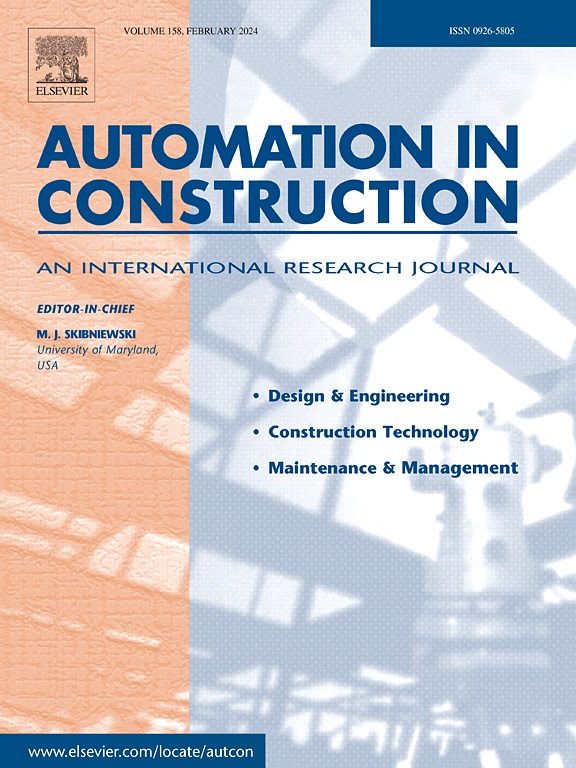智能施工现场管理图像质量评价的VIF-TOPSIS耦合算法
IF 11.5
1区 工程技术
Q1 CONSTRUCTION & BUILDING TECHNOLOGY
引用次数: 0
摘要
实时监控对于智能施工管理至关重要,但环境的复杂性降低了监控视频的质量。传统的视觉信息保真度(VIF)算法依赖于参考图像,这限制了它们在无参考场景(如自主系统和工业检测)中的应用。本文以信息论为基础,提出了一种将VIF与理想相似度排序偏好技术(TOPSIS)相结合的算法,得到了VIF - TOPSIS耦合算法。小波变换提取特征;TOPSIS选择最优特征;然后用小波反变换对图像进行重构。一个“理想的解决方案”图像取代了参考依赖,支持无参考质量评估。在多帧样本上,与传统方法相比,该算法显著提高了峰值信噪比(PSNR)、结构相似指数(SSIM)和梯度幅度相似偏差(GMSD)。对比度和亮度的增强进一步验证了其在动态环境中的有效性。该框架推进了实时视频处理,为智能施工管理提供了强大的技术支持。本文章由计算机程序翻译,如有差异,请以英文原文为准。

VIF–TOPSIS coupling algorithm for image quality assessment in smart construction site management
Real-time monitoring is critical for smart construction management, yet environmental complexities degrade surveillance video quality. Traditional visual information fidelity (VIF) algorithms depend on reference images, which limits their use in no-reference scenarios such as autonomous systems and industrial inspection. Grounded in information theory, this paper proposes an algorithm that integrates VIF with the technique for order preference by similarity to ideal solution (TOPSIS), obtaining the coupling algorithm VIF–TOPSIS. Wavelet transforms extract the features; TOPSIS selects the optimal features; and the inverse wavelet transform reconstructs the images. An “ideal solution” image replaces the reference dependencies, enabling no-reference quality assessment. Evaluated on multiframe samples, the algorithm significantly improved peak signal-to-noise ratio (PSNR), structural similarity index measure (SSIM), and gradient magnitude similarity deviation (GMSD) compared to traditional methods. Enhanced contrast and brightness further validated its efficacy in dynamic environments. This framework advances real-time video processing, offering robust technical support for smart construction management.
求助全文
通过发布文献求助,成功后即可免费获取论文全文。
去求助
来源期刊

Automation in Construction
工程技术-工程:土木
CiteScore
19.20
自引率
16.50%
发文量
563
审稿时长
8.5 months
期刊介绍:
Automation in Construction is an international journal that focuses on publishing original research papers related to the use of Information Technologies in various aspects of the construction industry. The journal covers topics such as design, engineering, construction technologies, and the maintenance and management of constructed facilities.
The scope of Automation in Construction is extensive and covers all stages of the construction life cycle. This includes initial planning and design, construction of the facility, operation and maintenance, as well as the eventual dismantling and recycling of buildings and engineering structures.
 求助内容:
求助内容: 应助结果提醒方式:
应助结果提醒方式:


